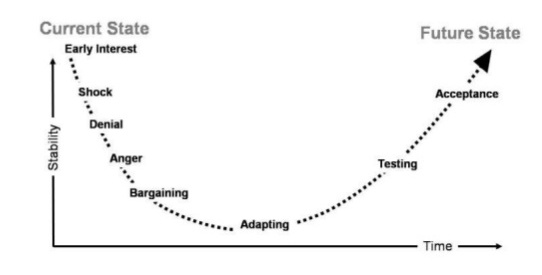
All of us have experienced it. You have a well thought through plan that will transform your organization, get rid of inefficiencies and ensure a healthy bottom line. You have even put some thought into the change management elements. A solid plan, which falters as soon as it is put into motion. You think you have everything in place but the organization just isn’t changing as it should.
Resist a knee-jerk reaction to a ‘stubborn’ organization
When an organizational transformation is essential and the clock is ticking, it is tempting to implement quick fixes or to demand the organization ‘just do it’. But in order to create a sustainable change, and a sustainable turnaround, the investment into understanding why the turnaround is failing and identifying suitable actions to address, is worth the additional time and will support a change that provides long term value.
Consider the personal element
Change isn’t easy. In our personal lives and in our professional lives we are all naturally resistant to change in some degree or another. The first thing to remember is that it is not the organization that doesn’t want to change, but the people within the organization that are resisting the change.
Understanding this, and putting in place mechanisms to help people adapt to the change, gives you the first stepping stone to implementing a successful organizational transformation.
We have identified these three 3 principles in helping people adapt to change:
Principle 1
Treat resistance as a natural by-product of organizational change.
Principle 2
Human reactions to change are normal, so help people understand their own reactions to change.
Principle 3
You should expect people to go backwards as well as forwards.
In accepting that there will be resistance you can focus on giving your employees, supervisors and leaders the change management tools they need to recognize, accept and understand the resistance to change. While your teams may understand the need to transform the organization, each and every one will go through an individual change cycle.

Everyone moves through the different stages at their own pace and it is common for people to move backward a stage or two before they eventually move forward through to acceptance. Providing this knowledge to your employees, and providing your team leaders the training and support to recognize the different behaviors and actions associated with each stage allows your workforce to accept this normal reaction. It also allows those who are ahead on the curve help others during the transformation.
Consider the change management framework
There is nothing worse than seeing a well-crafted transformation plan end up as a series of poorly scoped, often conflicting actions when individual units are left to themselves to implement the change needed to reach to the transformational objectives.
Conflicting, poorly thought out messages, cross purposed objectives and competition for scarce resources are common symptoms of a failing transformation. All add to the confusion and unease employees may be feeling about the change.
By managing the transformation within an enterprise change management framework you provide your transformation team the tools they need to structure the transformation as a well planned program of work.
A structured approach, with a change roadmap, clear plans, change risk management, cross-unit tracking and, aligned communication and language, keeps the whole organization on track and focused throughout the organizational transformation.
Combine the approach to give your turnaround every chance of success
Implementing a successful turnaround requires an end-to-end holistic approach. Assuming the turnaround strategy is sound, implementing it successfully requires understanding, supporting and managing peoples’ natural resistance to change. It also requires providing the transformation teams the tools they need to consistently plan, communicate and track actions; enabling the turnaround you need.
Are you looking for the right change management framework for your organization? Find out more about how Changefirst’s industry-leading People-Centered Implementation (PCI) methodology can help you here.
Download the article, 3 principles for helping people adapt to change for further reading on helping people adapt to change.


Leave a comment